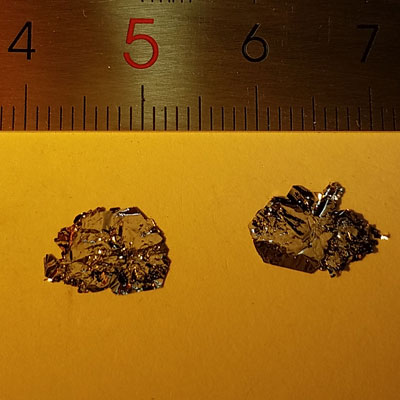Description
Mo-Doped WSe₂ Crystals (25% Molybdenum Doping)
Mo-doped WSe₂ is a layered transition metal dichalcogenide (TMDC) with a van der Waals structure, combining the intrinsic properties of WSe₂ with enhanced functionality from molybdenum doping. The 25% Mo doping introduces bandgap tunability, improved charge carrier dynamics, and unique optical and electronic properties, making it ideal for applications in optoelectronics, quantum materials research, and energy technologies.
Sample Size Options:
Crystals larger than 10 mm²
Crystals larger than 25 mm²
Crystals larger than 100 mm²
Material Properties:
Layered Van der Waals Structure: Facilitates exfoliation into thin layers for advanced research and device fabrication.
Bandgap Tunability: Molybdenum doping adjusts electronic and optical properties for specific applications.
High Optical Absorption: Strong absorption in the visible-to-infrared range.
Enhanced Carrier Mobility: Improved charge transport dynamics due to Mo doping.
Crystal Structure:
Type: Hexagonal layered structure
Features: Cleavable layers ideal for thin-film fabrication and nanoscale research.
Degree of Exfoliation:
Ease of Use: Readily exfoliates into monolayers or few-layer sheets for advanced 2D material studies.
Other Characteristics:
Optoelectronic Potential: Enhanced photoluminescence and carrier mobility for high-performance devices.
Quantum Applications: Suitable for studying doping effects on topological states and quantum transport.
Energy Applications: Promising for hydrogen evolution reactions (HER) and other catalytic processes.
Applications:
Optoelectronics:
Ideal for photodetectors, light-emitting diodes, and photovoltaic devices.
Quantum Materials Research:
Enables exploration of doping-induced quantum phenomena and electronic behavior.
2D Material Studies:
Perfect for integration into van der Waals heterostructures and thin-film devices.
Energy Applications:
Promising for catalysis, thermoelectric devices, and hydrogen evolution reactions (HER).
Sensors:
High sensitivity to environmental and chemical changes, making it ideal for advanced sensing technologies.
Additional information
| CAS Number | N/A |
|---|

